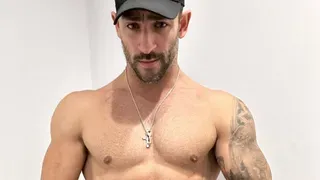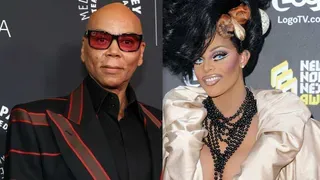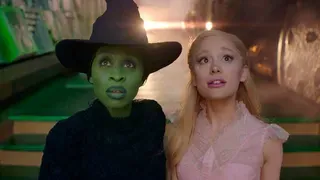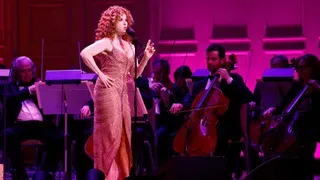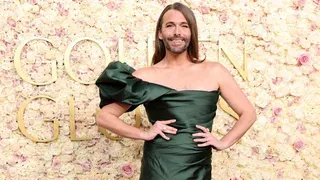October 27, 2023
From Country to Pop, 2014 Nostalgia to 2023 Reality – it's Time for Taylor Swift's '1989'
Maria Sherman READ TIME: 5 MIN.
Taylor Swift's reimagined "1989" is here, the album that ushered in the first Peak Swift era – revisited at the height of her massive pop culture dominance.
Released in 2014 and named for her birth year, the original "1989" signified a sonic rebirth. Swift had shed the Nashville country roots of her first four studio albums and announced herself a full-fledged pop superstar.
"1989 (Taylor's Version)," out Friday, takes that version of Swift – then in her mid-20s, living in New York, prepared to take on the world with an arsenal of '80s synth sounds and a new producer named Jack Antonoff – and includes five unreleased "vault" tracks that deliver more clues about the artist she was then.
Previous "Taylor's Version" releases have been more than conventional rerecordings, arriving with new music, Easter eggs and visuals that deepen understanding of her work. The project – the fourth of six rereleases – was instigated by music manager Scooter Braun's purchase and sale of her early catalog and represents Swift's effort to control her own songs and how they're used.
Her return to "1989" – the album where she began to confront media portrayals of herself and in song – comes at another Swift popularity crescendo but also during a 2010s nostalgia (Yes, it's only 2023. Yes, the nostalgia is real).
Here are some key things to consider as "1989" propels the New Peak Swift era forward:
OPENING THE VAULT
Listeners will dive deep into the vault tracks for clues into Swift's mind around 2014. "Slut!" may recall her contentious relationship with the press, which fixated on her alleged romantic relationships and the songs she'd write once they ended.
They'll find connections to "Out of the Woods" on "Is It Over Now?" in the lyrics "when you lost control / red blood, white snow." They'll wonder who made her pretend to like acid rock and mega yachts on "Now That We Don't Talk." But more insight will be found in thinking about where Swift was at the time, what came next, and how that mirrors the current moment.
Swift dominated headlines and award show crowd shots in 2014, reaching a point of oversaturation, and leading to her retreat from the public eye prior to the release of her undercelebrated revenge record, 2017's "Reputation." With Swift getting similar treatment on NFL broadcasts due to her relationship with Kansas City Chiefs star Travis Kelce, could history repeat itself?
Brittany Spanos, senior writer at Rolling Stone, puts it simply: "People just get easily sick of anyone who's super famous. And I think that we haven't had a lot of monocultural kind of celeb moments like this in a minute," she says of Swift in 2023.
Rebecca Jennings, a senior correspondent at Vox covering social platforms and the creator economy, sees a connection between the 2014 eras as being "post-recession" and 2023 being "post-COVID," a time where Swift succeeds because there's a sort of cultural "bouncing back vibe," a time where people want celebratory music.
In 2014, that was Swift finding her pop sound with "1989."
In 2023, it's becoming the most successful version of herself, and rereleasing "1989 " while on the top of her game.
FROM COUNTRY TO POP: A TRANSITIONAL ALBUM
"It was a huge risk for her to move completely outside of country – there's no country elements on this album whatsoever," says Spanos, who also teaches a course on Swift at New York University's Clive Davis Institute. She says Swift's penchant for pop songwriting is evidenced all the way back on her 2008 sophomore release "Fearless" in tracks like "Love Story," but "1989" is "her first official, full-length pop project."
However, more so than a declarative move into pop, Spanos views "1989" as "more in the lineage of the kind of transitional albums teen stars tend to make when they move into adulthood," comparing it to Janet Jackson's "Control" and Christina Aguilera's "Stripped." "1989" is the album where Swift's divorced herself from adolescence. She's moved to NYC; she's working with new people; she's making synth pop.
Rachel Brodsky, a music and culture writer who has been covering Swift for well over a decade, points out that Swift's sonic experimentations were earned – and that she very well might be one of the final pop superstars who couldn't come out of the gate playing with genre the way listeners are accustomed to now.
"She came up in the shadow of the Chicks, where she was told under certain circumstances by her team, like, 'You don't want to be the Chicks," Brodsky says of the country music group who were chastised for going against the expectations of their audience.
The Chicks, acts like Shania Twain and LeAnn Rimes cracked open the door for Swift to burst open on "1989," she says. And not just as a pop musician, but as someone bucking convention – something Brodsky says artists like Kacey Musgraves, Maren Morris and even Olivia Rodrigo have followed.
ENGAGING WITH HER OWN CELEBRITY
By the time "1989" rolled around, Swift was no longer writing high school romances and fairytale narratives.
She'd begun engaging with her celebrity reality – inviting Beyoncé and Jay-Z to her birthday party, hanging out with models and other very famous people in a group labeled "the Squad" in the media.
She was also writing songs like "'Bad Blood,' which is about her feud with Katy Perry," says Spanos, a decisive move away from the kind of humility and "hometown girl" image associated with "country Taylor." That meant occupying more space in the pop landscape: reconciling with Kanye West after the infamous 2009 VMAs moment, starring alongside Drake in a commercial, getting Kendrick Lamar on a remix, so on and so forth.
In 2023, Swift is more famous now than she was then, and she's still engaging with her celebrity in a very public way.
'1989 (TAYLOR'S VERSION)' PLAYS INTO FONDNESS FOR 2014
Jennings believes people are nostalgic for the year 2014 and always will be – because it was one of the last online periods before the hyper-commodification of social media – which makes 2023 the ideal time for revisiting "1989."
There were blogs, and Tumblr, and our internet lives were less defined by algorithms. "It is looked at as this Edenic time of innocence and purity," she says. At the time, there was a kind of monoculture that leans itself to nostalgia in 2023, she says – everyone receiving the same information on the same topics at the same time, Taylor Swift's "1989" era included – as opposed to the current influencer-based model.
(It's worth noting that Swift herself was very active on Tumblr, using the social media platform to find fans to invite to private listening sessions held in her home.)
Additionally, in the last few months, Swift has been seen dining with very famous friends like Blake Lively, Sophie Turner and Selena Gomez, a return to the language of her "Squad." "By parading out many of the same friends she had during that era that she was also parading about, she's playing into this nostalgia element," argues Jennings.
At the time, theories swirled around Swift's assumed romantic relationships – many believe the song "Style" is about her short relationship with Harry Styles – and in 2023, her latest assumed romance has become a top story again.
"It's almost like she's method promoting," Spanos jokes. "She's leaning into it again." But there's a huge difference in the kind of treatment she's receiving from the public this time around. The press appears to be rooting for her relationship, she says, instead of thinking about the breakup songs it might inspire, warning her male partners and turning Swift into the butt of the joke – as the media was doing in 2014.
"There's a little bit less of that level of misogyny," Spanos says.
So what's next for Swift?
The continuation of her Eras tour, which is set to resume on November 9th in Buenos Aires, Argentina. And, of course, two more "Taylor's Version" albums.


